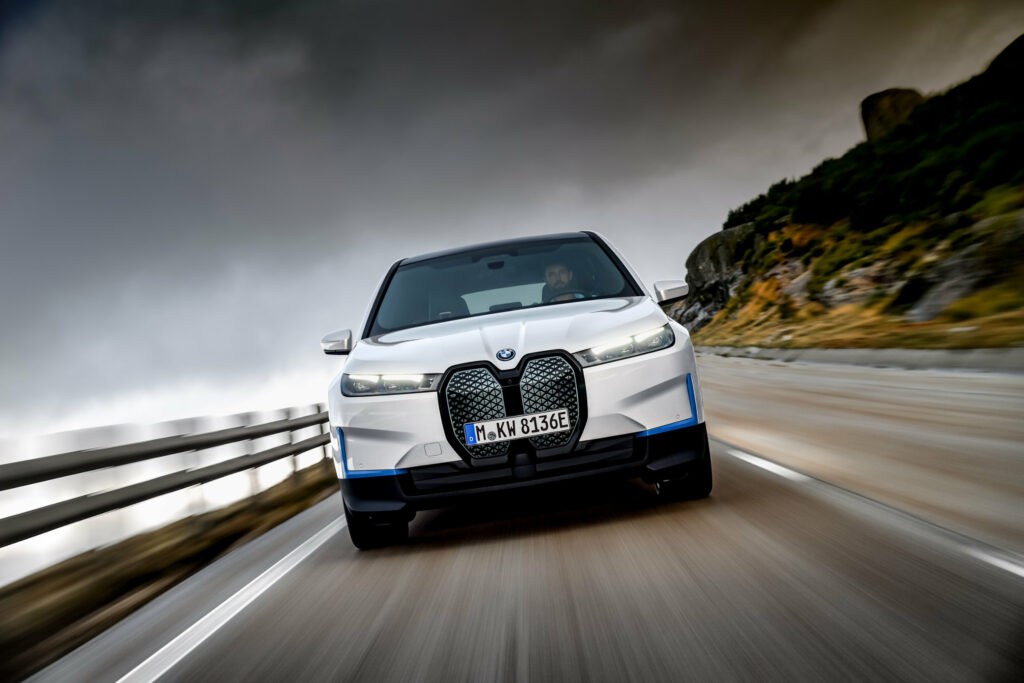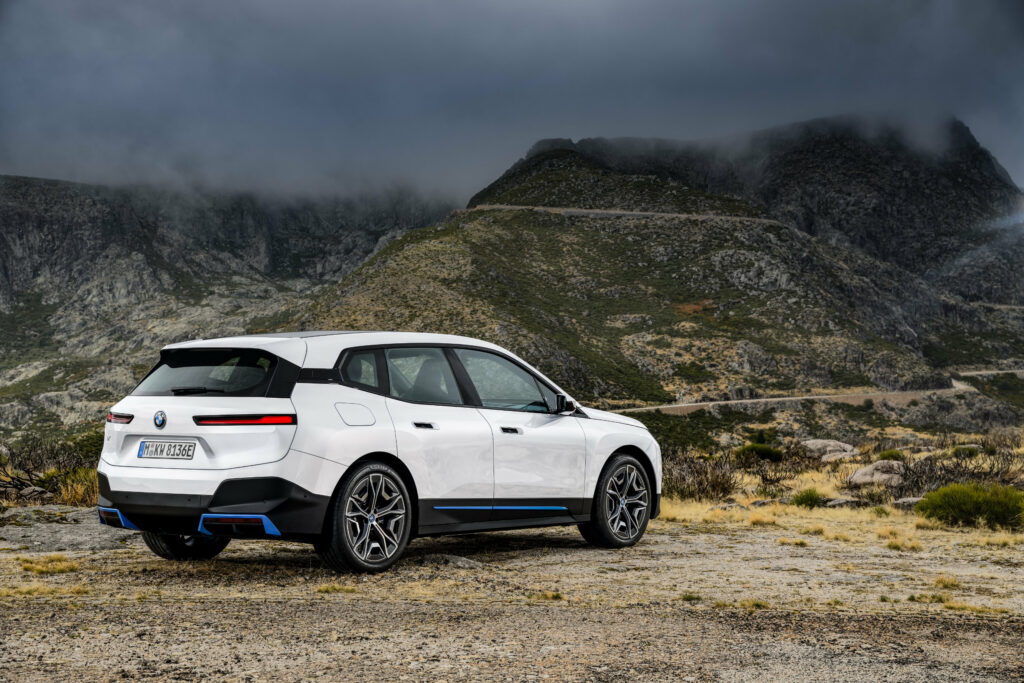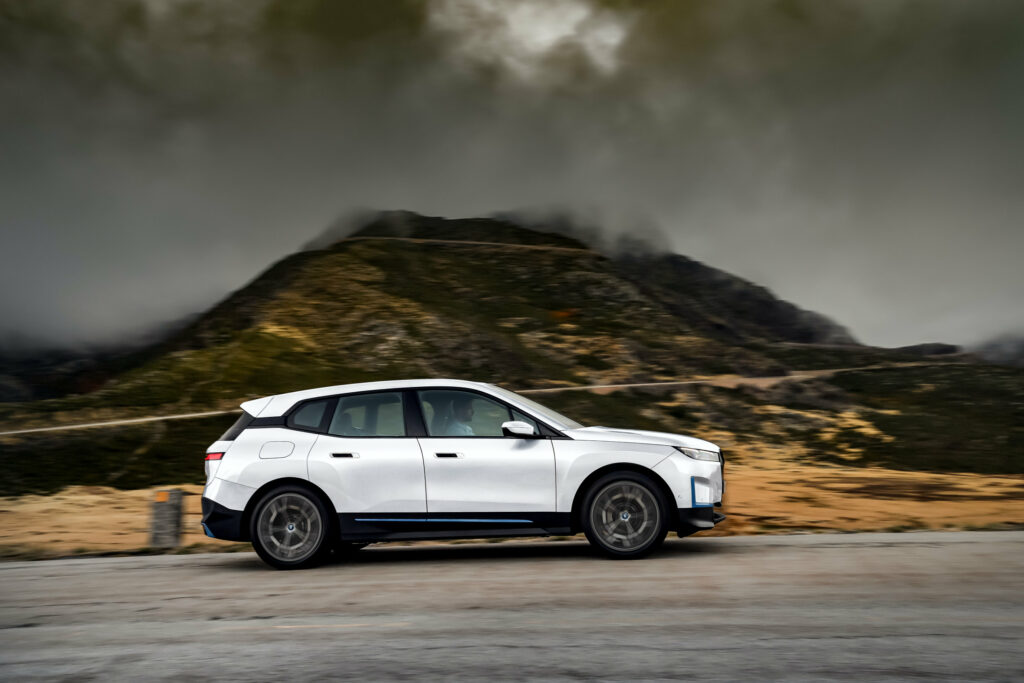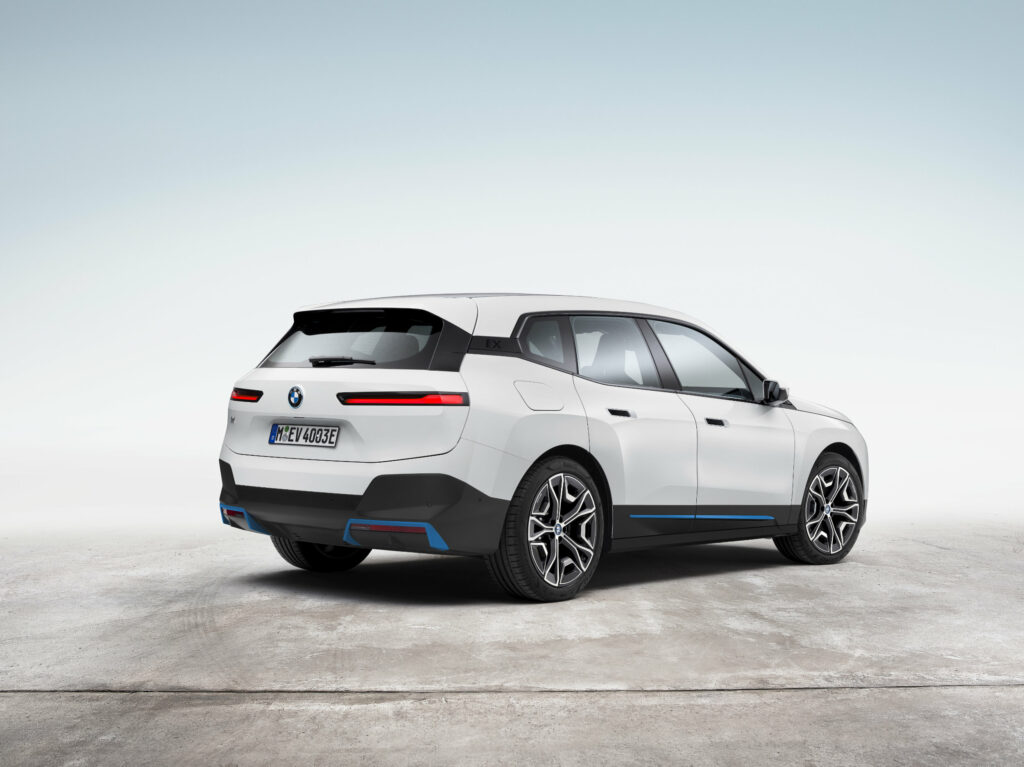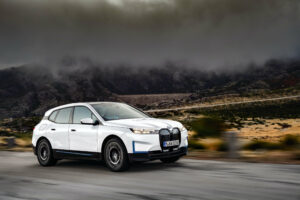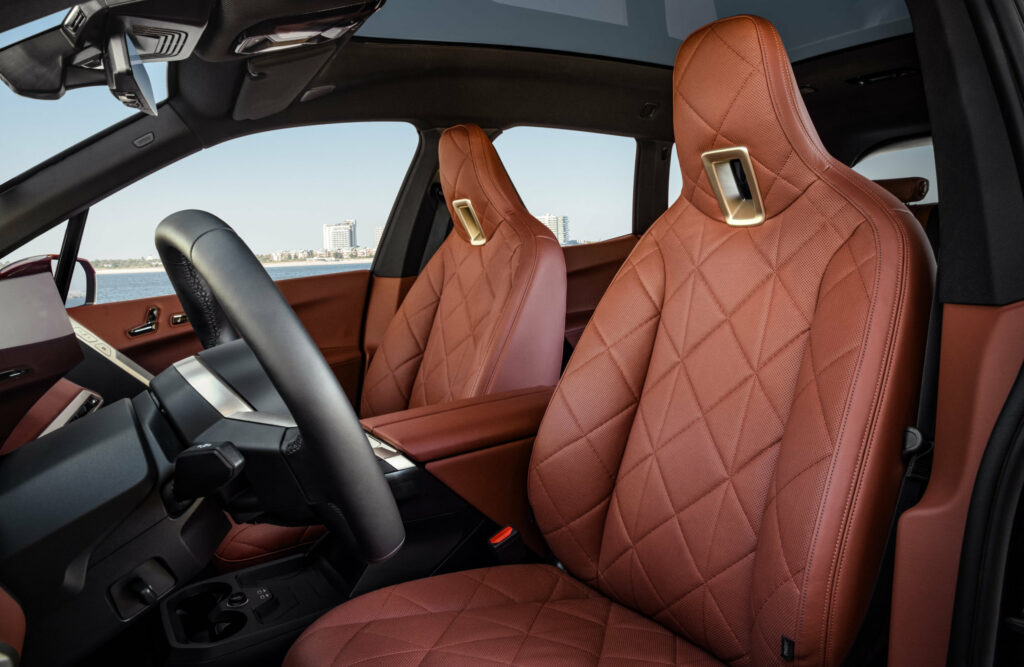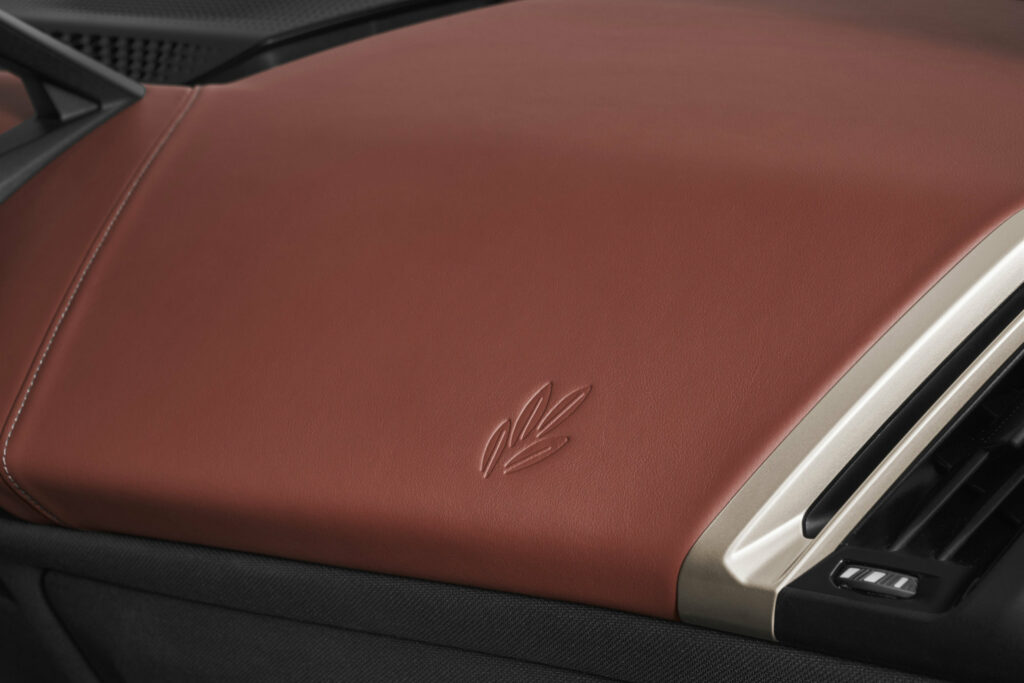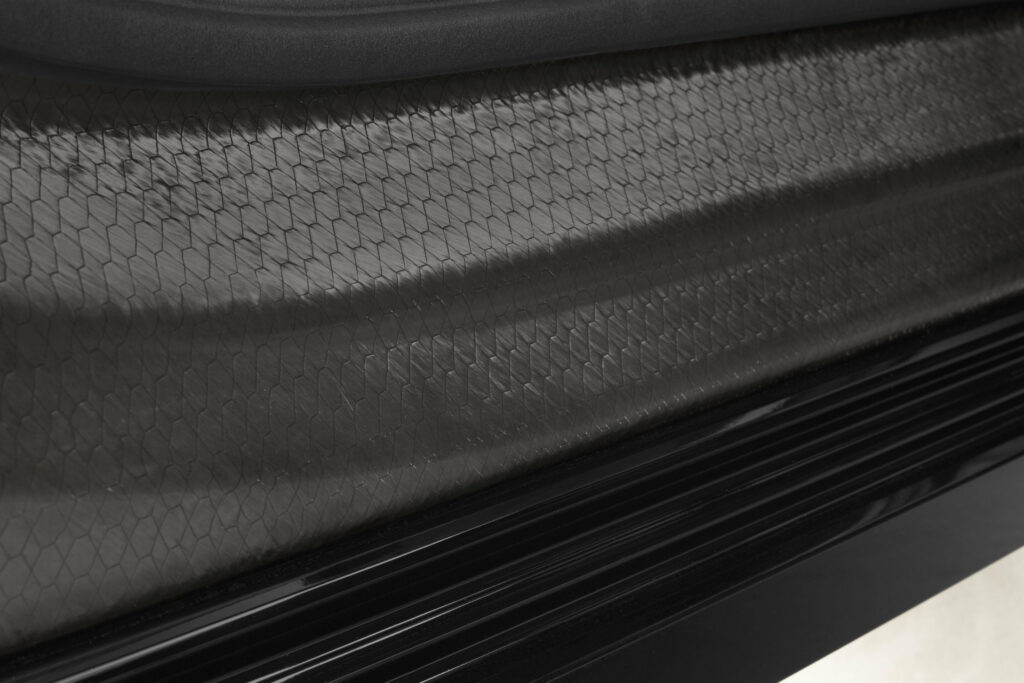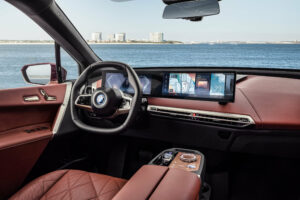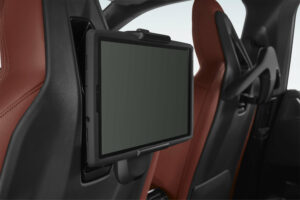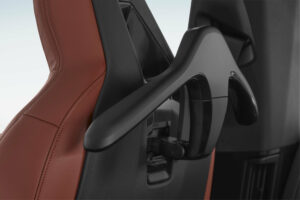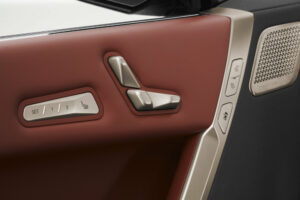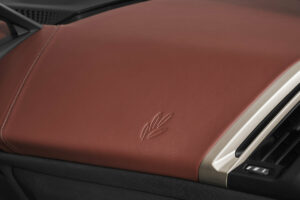BMW iX xDrive50
The BMW iX xDrive50 is an all-electric SUV produced by the German automaker BMW. It was first unveiled in November 2020 and is scheduled to go on sale in various global markets in 2022.

The iX xDrive50 features a 111.5 kWh battery pack and two electric motors with a combined output of 386 kW, and 765 Nm of torque. This allows the SUV to accelerate from 0 to 100 km/h (60 mph) in just 4.6 seconds and its top speed is 200 km/h.
According to BMW, the vehicle has a range of up to 300 miles on a single charge, and it can be charged from 10 percent to 80 percent in just 40 minutes with a fast-acting DC charger.
In terms of design, the iX xDrive50 has a futuristic and aerodynamic look, with a large dual grille, sleek LED headlights, and a sloping roof line. The interior features a modern and minimalist design, with a large curved display screen that takes up the entire dashboard.

The iX xDrive50 also includes advanced technology features such as a head-up display, voice-activated digital assistant, and advanced driver assistance systems such as adaptive cruise control and lane departure warning.
| Performance | |
| Acceleration 0 – 100 km/h | 4.6 sec |
| Top Speed | 200 km/h |
| Electric Range | 505 km |
| Total Power | 385 kW (523 PS) |
| Total Torque | 765 Nm |
| Drive | AWD |
| Battery and Charging | |
| Battery Capacity | 111.5 kWh |
| Battery Useable | 105.2 kWh |
| Europe | |
| Charge Port | Type 2 |
| Port Location | Right Side – Rear |
| Charge Power | 11 kW AC |
| Charge Time (0->505 km) | 11h15m |
| Charge Speed | 45 km/h |
| Fastcharge Port | CCS |
| FC Port Location | Right Side – Rear |
| Fastcharge Power (max) | 200 kW DC |
| Fastcharge Time (51->404 km) | 34 min |
| Fastcharge Speed | 620 km/h |
| Energy Consumption EVDB Real Range | |
| Range | 505 km |
| Vehicle Consumption | 208 Wh/km |
| CO2 Emissions | 0 g/km |
| Vehicle Fuel Equivalent | 2.3 l/100km |
| WLTP Ratings (TEL) | |
| Range | 630 km |
| Rated Consumption | 198 Wh/km |
| Vehicle Consumption | 167 Wh/km |
| CO2 Emissions | 0 g/km |
| Rated Fuel Equivalent | 2.2 l/100km |
| Vehicle Fuel Equivalent | 1.9 l/100km |
| WLTP Ratings (TEH) | |
| Range | 549 km |
| Rated Consumption | 230 Wh/km |
| Vehicle Consumption | 192 Wh/km |
| CO2 Emissions | 0 g/km |
| Rated Fuel Equivalent | 2.6 l/100km |
| Vehicle Fuel Equivalent | 2.2 l/100km |
| TEL = Test Energy Low | TEH = Test Energy High | |
| Rated = official figures as published by manufacturer. Rated consumption and fuel equivalency figures include charging losses. | |
| Vehicle = calculated battery energy consumption used by the vehicle for propulsion and on-board systems. | |
| Real Energy Consumption Estimation between 146 – 288 Wh/km | |
| City – Cold Weather * | 210 Wh/km |
| Highway – Cold Weather * | 288 Wh/km |
| Combined – Cold Weather * | 245 Wh/km |
| City – Mild Weather * | 146 Wh/km |
| Highway – Mild Weather * | 226 Wh/km |
| Combined – Mild Weather * | 183 Wh/km |
| Energy use for each trip will vary considerably depending on the driver and the conditions. Therefore, we have provided a range of estimates which can be useful in developing an understanding of the potential benefits of this technology. | |
| Dimensions and Weight | |
| Length | 4953 mm |
| Width | 1967 mm |
| Width with mirrors | 2230 mm |
| Height | 1696 mm |
| Wheelbase | 3000 mm |
| Weight Unladen (EU) | 2585 kg |
| Gross Vehicle Weight (GVWR) | 3145 kg |
| Max. Payload | 635 kg |
| Cargo Volume | 500 L |
| Cargo Volume Max | 1750 L |
| Cargo Volume Frunk | No Data |
| Roof Load | 75 kg |
| Tow Hitch Possible | Yes |
| Towing Weight Unbraked | 750 kg |
| Towing Weight Braked | 2500 kg |
| Vertical Load Max | 100 kg |
| Miscellaneous | |
| Seats | 5 people |
| Isofix | No Data |
| Turning Circle | 12.8 m |
| Platform | No Data |
| Car Body | SUV |
| Segment | JE – Executive |
| Roof Rails | No |
| EV Dedicated Platform | Yes |
ome and Destination Charging (0 -> 100%)
A public charging station is required to use the highest possible charging rate. The EVSE/charging station’s charging capacity affects how long it takes to fully charge the battery. The table below shows all possible options for fully charging the BMW iX xDrive50.
In Europe, plugging an electric car into an outlet is often as easy as plugging it into a household outlet, but there are differences from country to country. The table below shows the different ways to charge the BMW iX xDrive50, but in some countries some chargers may not be available.
Type 2 (Mennekes – IEC 62196)

| Charging Point | Max. Power | Power | Time | Rate |
| Wall Plug (2.3 kW) | 230V / 1x10A | 2.3 kW | 54 hours | 9 km/h |
| 1-phase 16A (3.7 kW) | 230V / 1x16A | 3.7 kW | 33h30m | 15 km/h |
| 1-phase 32A (7.4 kW) | 230V / 1x32A | 7.4 kW | 16h45m | 30 km/h |
| 3-phase 16A (11 kW) | 400V / 3x16A | 11 kW | 11h15m | 45 km/h |
| 3-phase 32A (22 kW) | 400V / 3x16A | 11 kW | 11h15m | 45 km/h |
Fast Charging (10 -> 80%)
If you want to enjoy driving an electric car, one of the most important features to consider is the number of miles per hour the car can travel while charged. This is called the “range” of the car. All electric cars have a certain range, even if they are 100% charged. This is because they do not have an internal combustion engine to lean on if you need to drive a long distance.
Max. Power: The maximum power provided by the charging point
Avg. Power: The average power provided by the charging point during a session of 10% to 80%.
Time: the time it takes to charge from 10% to 80%
Speed: the average charging rate during the session of 10% to 80%
Combined Charging System (CCS Combo 2)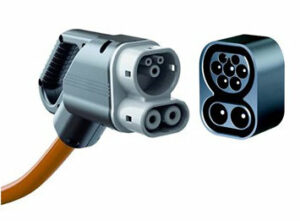
| Charging Point | Max. Power | Avg. Power | Time | Rate |
| CCS (50 kW DC) | 50 kW | 50 kW | 93 min | 220 km/h |
| CCS (100 kW DC) | 100 kW | 85 kW | 55 min | 380 km/h |
| CCS (150 kW DC) | 150 kW | 110 kW | 42 min | 500 km/h |
| CCS (175 kW DC) | 175 kW | 125 kW | 37 min | 570 km/h |
| CCS (350 kW DC) | 200 kW | 135 kW | 34 min | 620 km/h |
| Brand | BMW |
| Model | iX xDrive50 |
| Body Style | SUV |
| Car Engine | Electric |
| Motor power | 386 |
| Maximum Torque, Nm | 765 |
| Battery Energy, kWh | 111.5 |
| Power reserve (NEDC/EPA/WLTP), km | - / - / 720 |
| Level Charging (230/400/DC), hours | - / 11.15 / 0.34 |
| Electrical Acceleration, 0-100 km/h (0-62.1 mph) in sec | 4.6 |
| Top Speed, km/h | 200 |

